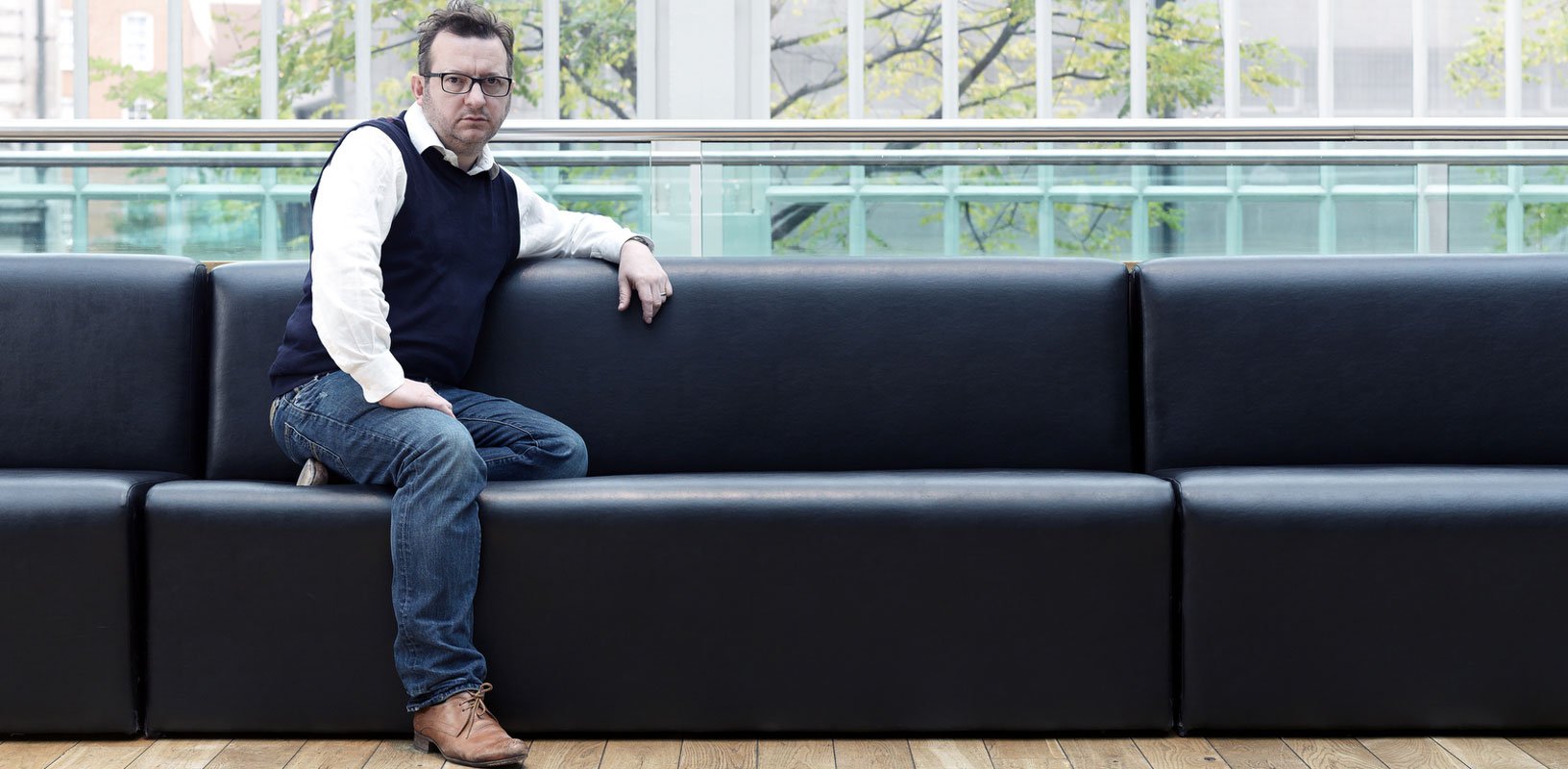Turnage interview about Cello Concerto and Speranza

This season brings four European performances of Mark-Anthony Turnage’s new Cello Concerto for Paul Watkins and the premiere of Speranza by the London Symphony Orchestra
Following string concertos for violin and viola, what particular challenges does a cello concerto present?
The concertos for violin and viola both used fairly large orchestras and I had to be cautious about balance. But with cello the issue is even more acute – it’s partly to do with the range, which is wide but centred in the middle of the orchestra, and partly that on some cello strings the instrument doesn’t cut through. Olly Knussen suggested I look at what Elgar does technically in his cello concerto, and I took this advice to heart. You notice Elgar doesn’t have a lot going on in the orchestra. He avoids doubling and only allows the orchestra to be heavy when the soloist isn’t playing. So I’ve used a smaller orchestra than my other string concertos and have tried to take special care of the soloist.
Paul Watkins has played a lot of your music over the years. How did the collaboration develop?
I’ve got to know Paul’s style of cello playing over many years when he performed a lot of my music with the Nash Ensemble. As well as having an amazing technique, he’s always been incredibly sympathetic to what I wanted. I’ve been stung once or twice by soloists who’d never done my stuff before. But with a cello concerto I knew that if I wrote one it just had to be for Paul. We haven’t needed to talk much so far, as I know his style so well, but I’m looking forward to the collaboration up to the premiere.
The fourth movement is titled Prayer for a Great Man. Who is that?
He was Neil Swallow, my father-in-law, who died a couple of years back and was an inspiring man for me. I wrote a version of this Prayer for his funeral. In the concerto it takes the form of a duet for horn and cello and takes the place of where a cadenza would normally appear. It’s not flashy at all though, and is instead lyrical and meditative. I wondered whether to orchestrate it but decided it said everything that was needed in its pared back form.
Your major new orchestral work is titled Speranza. Why?
Sometimes the title comes early but here it came late. This was because my first intentions were to write a big, dark, despairing work as I’d been through a tough time. The piece was to have been in memory of poets and writers who’d committed suicide including Paul Celan, Primo Levi and Sadegh Hedayat. But I soon realised this all seemed a bit gloomy and not exactly a fun evening in the concert hall, especially with a piece lasting 45 minutes. So I started brightening things up and it soon became more upbeat, extrovert and optimistic. Eventually the work turned completely round and became a positive piece about hope –
I guess it was something of a personal transformation. Although Speranza shimmers a lot, I suspect the dark heart of the original idea still peeks through.
Each movement is headed by ‘Hope’ in a different language. Is the music flavoured by the nationality?
No, not at a conscious level. It’s certainly not an Olympic-style piece, travelling to five countries. That said, there may be some elements of folk music, for instance Arabic in the first movement and Jewish in the last, which may relate to the original poetic sources, but they are so absorbed you can’t really hear them at all. The work overall is dedicated to my younger kids Milo and Amelie, who for me are a real hope for the future.
Both the Cello Concerto and Speranza are five-movement works. Have your recent ballet scores, built from smaller units, influenced your orchestral writing?
Yes. In the past I’ve often tended to link the musical flow together into a single sweep. So, if you think of my last big purely orchestral piece, Chicago Remains, it is continuous music, building from start to finish. I had to think differently for the ballets Undance and Trespass, which demanded shorter movements that had to express different characteristics fully within a short span. This forced me to compose in a very different way. I knew with Speranza that I had to create 45 minutes of orchestral music with no words and no chorus. So the five resulting movements exist as worlds in themselves, with the development in each happening in a much denser timeframe.
Interviewed by David Allenby.
Turnage
Cello Concerto (2010) 20’
for Paul Watkins
13 October 2012 (world premiere)
De Singel, Antwerp
Royal Flemish Philharmonic/Edo de Waart
18 January 2013 (Finnish premiere)
Tampere Hall
Tampere Philharmonic Orchestra/Hannu Lintu
7 February 2013 (UK premiere)
Philharmonic Hall, Liverpool
Royal Liverpool Philharmonic Orchestra/
Vasily Petrenko
20 June 2013 (German premiere)
Gewandhaus, Leipzig
Gewandhausorchester/Andris Nelsons
Speranza (2011–12) 45’
for orchestra
7 February 2013 (world premiere)
Barbican, London
London Symphony Orchestra/Daniel Harding
> Más información sobre la obra: Cello Concerto
Photo: Philip Gatward
